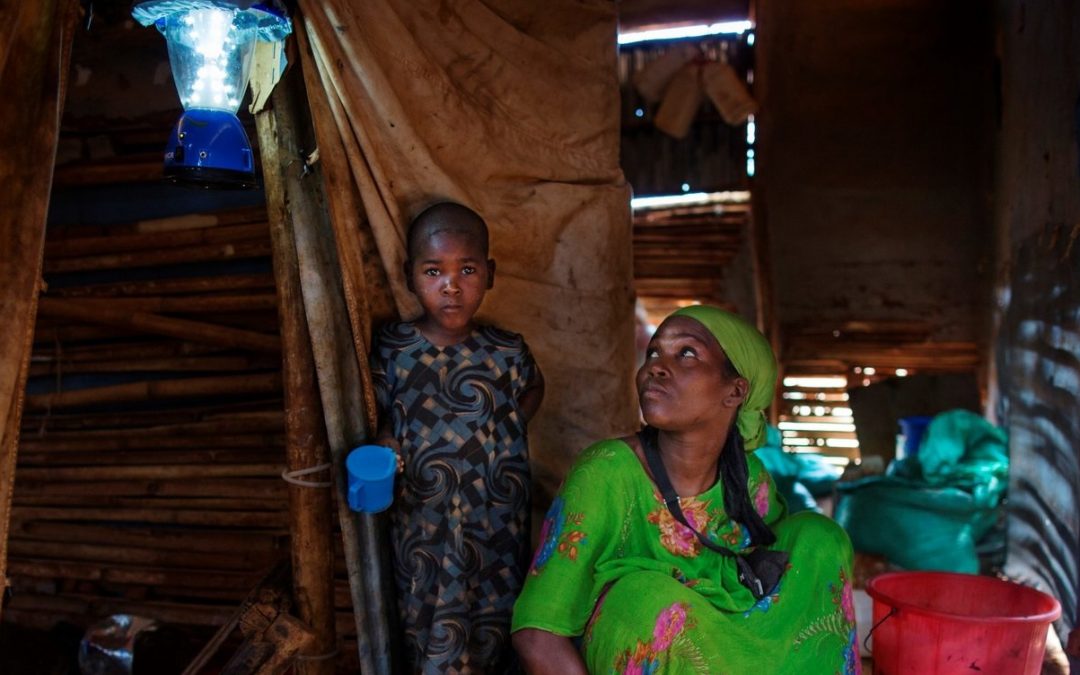Meeting the energy needs of refugees and displaced people have long been based on short term and unsustainable projects that are not only inefficient but also costly for the humanitarian community. This has triggered growing attention at policy level on providing alternative solutions that are more efficient and sustainable by embracing local capacity with global technology.
One of the key issues discussed at the 2015 Humanitarian Innovation Conference in Oxford was facilitating innovative ways in which sustainable energy could be delivered as well as tackling the challenges that hinder them.
“Some of the reasons why many of these interventions fail in humanitarian settings are to do with lack of technical specialists running the day-to-day energy operations. Placing the right people with the right skills to monitor and maintain [solar panels in refugee camps, for example] makes it more sustainable,” said Ben Good, CEO of the Global Village Energy Project (GVEP)
There is need for wider institutional reform and evidence-based approaches through research and technology.
“What we are glimpsing is that a focus on energy provides an entry point to illuminate a wider set of issues – livelihoods, cost-saving opportunities, relationships with host communities, environmental protection, and the security, health and safety of displaced people,” says Michael Keating, Chatham House’s Associate Director of Research Partnerships
Most refugees living in camps mainly depend on firewood for cooking. Women who usually do collect firewood face life-threatening challenges ranging from sexual violence, health hazards, and tensions with the host community over environmental degradation.
Alternative energy solutions that are donor dependent and do not engage with culturally-appropriate local capacity have in most cases failed to produce long-term impact. This is also true in urban refugee settings where solutions are not integrated into livelihood opportunities for sustainability.
“House hold energy needs for lighting and low-power appliances vary greatly depending on the cultural outlook of the households. There are many differing expectations. UNHCR in Jordan for instance is constructing two large solar farms to address energy poverty needs, in other locations street lighting and portable solar lights for lighting and charging phones is how basic needs are addressed,” said Paul Mccallion, Renewable Energy Officer at UNHCR.
Bottom-up Innovation
The Energy Lab, which is a collaborative initiative of UNHCR Innovation and UNHCR’s Energy & Environment Unit, has been prototyping models that focus on utilizing the local capacity of affected communities. For example, they’ve worked with refugees in Dollo Ado, Ethiopia to produce fuel-efficient cook stoves. With technical support and facilitation, refugees were able to design their own stoves to minimize firewood consumption and reduce the health hazards associated with the traditional open-fire cooking. They are also trained to produce solar bulbs using locally available materials such as plastic water bottles.
In 2014, UNCHR launched the first global SAFE (Safe Access to Fuel and Energy) energy strategy, a global inter-agency initiative to help refugees access appropriate, sustainable energy for cooking and lighting.
“UNHCR is currently working to alleviate energy poverty through the SAFE strategy. This approach encourages each program to focus on the specific needs of refugees and also lean towards what is the regional strong technology adaptation. For example, in some areas solar technologies are well established and understood, in other regions biogas is long established and accepted. Within all camps the biggest and most pressing need is fuel poverty, fuel for cooking and heating is massive and would be the largest part of the energy poverty need,” said Paul Mccallion,
The role of the private sector in responding to the humanitarian crisis has a profound impact in shaping the ways in which aid is delivered. Therefore, engaging them in the efforts of providing alternative energy to the displaced comes in handy since they not only bring in financial support but also pool in technological expertise in the sector.
Empowering local communities to generate solutions to the issues that affect them most has proven to be more effective and sustainable since it encourages ownership where refugees are considered as partners and not just recipients.
“Aid agencies should create links and give the private sector direct access to the refugees who are the end users. This way they can work together to develop user-friendly products. Aid agencies should facilitate such relationships instead of just acting as intermediaries,” said Ben Good.
About the author
Born in Kismayo, Moulid was forced to flee Somalia with his family at the age of 10 to the Dadaab refugee camp across the border into Kenya. After witnessing the lack of opportunities for youth in Dadaab, Moulid started the Refugee Newsletter and engaged 30 young people, partnering with FilmAid International.
He has also partnered with UNHCR and other organizations working in Dadaab to collaborate on an umbrella initiative that provided skills training and jobs to Dadaab youth. You can follow him on Twitter at @MoulidHujale.
We’re always looking for great stories, ideas, and opinions on innovations that are led by or create impact for refugees. If you have one to share with us send us an email at [email protected]
If you’d like to repost this article on your website, please see our reposting policy.
Photo Credit: IKEA Foundation

